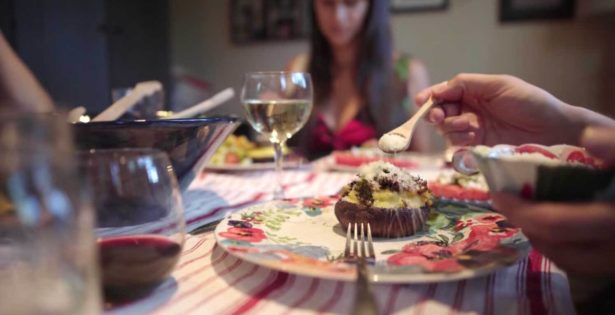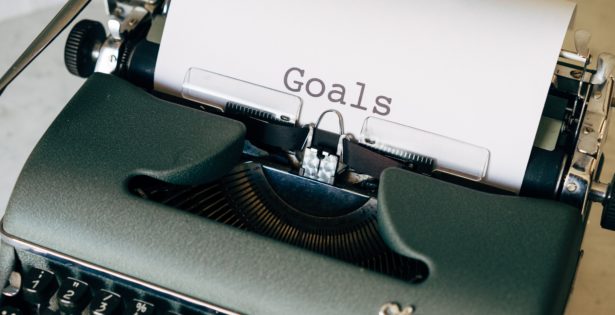WP_Query Object
(
[query] => Array
(
[category__in] => Array
(
[0] => 20
)
[post__not_in] => Array
(
[0] => 7944
)
[posts_per_page] => 50
[ignore_sticky_posts] => 1
[orderby] => desc
[_shuffle_and_pick] => 3
)
[query_vars] => Array
(
[category__in] => Array
(
[0] => 20
)
[post__not_in] => Array
(
[0] => 7944
)
[posts_per_page] => 50
[ignore_sticky_posts] => 1
[orderby] => desc
[_shuffle_and_pick] => 3
[error] =>
[m] =>
[p] => 0
[post_parent] =>
[subpost] =>
[subpost_id] =>
[attachment] =>
[attachment_id] => 0
[name] =>
[pagename] =>
[page_id] => 0
[second] =>
[minute] =>
[hour] =>
[day] => 0
[monthnum] => 0
[year] => 0
[w] => 0
[category_name] => pain-relief
[tag] =>
[cat] => 20
[tag_id] =>
[author] =>
[author_name] =>
[feed] =>
[tb] =>
[paged] => 0
[meta_key] =>
[meta_value] =>
[preview] =>
[s] =>
[sentence] =>
[title] =>
[fields] =>
[menu_order] =>
[embed] =>
[category__not_in] => Array
(
)
[category__and] => Array
(
)
[post__in] => Array
(
)
[post_name__in] => Array
(
)
[tag__in] => Array
(
)
[tag__not_in] => Array
(
)
[tag__and] => Array
(
)
[tag_slug__in] => Array
(
)
[tag_slug__and] => Array
(
)
[post_parent__in] => Array
(
)
[post_parent__not_in] => Array
(
)
[author__in] => Array
(
)
[author__not_in] => Array
(
)
[search_columns] => Array
(
)
[suppress_filters] =>
[cache_results] => 1
[update_post_term_cache] => 1
[update_menu_item_cache] =>
[lazy_load_term_meta] => 1
[update_post_meta_cache] => 1
[post_type] =>
[nopaging] =>
[comments_per_page] => 50
[no_found_rows] =>
[order] => DESC
)
[tax_query] => WP_Tax_Query Object
(
[queries] => Array
(
[0] => Array
(
[taxonomy] => category
[terms] => Array
(
[0] => 20
)
[field] => term_id
[operator] => IN
[include_children] =>
)
)
[relation] => AND
[table_aliases:protected] => Array
(
[0] => wp_term_relationships
)
[queried_terms] => Array
(
[category] => Array
(
[terms] => Array
(
[0] => 20
)
[field] => term_id
)
)
[primary_table] => wp_posts
[primary_id_column] => ID
)
[meta_query] => WP_Meta_Query Object
(
[queries] => Array
(
)
[relation] =>
[meta_table] =>
[meta_id_column] =>
[primary_table] =>
[primary_id_column] =>
[table_aliases:protected] => Array
(
)
[clauses:protected] => Array
(
)
[has_or_relation:protected] =>
)
[date_query] =>
[request] =>
SELECT SQL_CALC_FOUND_ROWS wp_posts.ID
FROM wp_posts LEFT JOIN wp_term_relationships ON (wp_posts.ID = wp_term_relationships.object_id)
WHERE 1=1 AND wp_posts.ID NOT IN (7944) AND (
wp_term_relationships.term_taxonomy_id IN (20)
) AND ((wp_posts.post_type = 'post' AND (wp_posts.post_status = 'publish' OR wp_posts.post_status = 'acf-disabled')))
AND ID NOT IN
(SELECT `post_id` FROM wp_postmeta
WHERE `meta_key` = '_pilotpress_level'
AND `meta_value` IN ('','employee')
AND `post_id` NOT IN
(SELECT `post_id` FROM wp_postmeta
WHERE `meta_key` = '_pilotpress_level'
AND `meta_value` IN ('' )))
GROUP BY wp_posts.ID
ORDER BY wp_posts.post_date DESC
LIMIT 0, 50
[posts] => Array
(
[0] => WP_Post Object
(
[ID] => 8392
[post_author] => 3
[post_date] => 2021-11-10 19:45:30
[post_date_gmt] => 2021-11-10 19:45:30
[post_content] =>
What do you know about hormesis? It’s the phenomenon that (kind of) explains the expression “what doesn’t kill me makes me stronger.” Technically, hormesis refers to biological processes in which a certain amount of exposure to a stress or toxin stimulates a favorable response, even when other amounts are deadly. For instance, while a high dose of radiation is often fatal, small doses have in some cases been shown to stimulate a positive adaptation leading to lower than average rates of cancer. A hormetic response to certain adverse influences sometimes leads to an evolution.
Last week I wrote about suffering and our complicated relationship with it. Perhaps we could see it as a hormetic relationship. In low to moderate doses, suffering is purely degrading. We tolerate it but it erodes our presence, our performance, and our patience. In extreme doses it kills us. But sometimes there’s a sweet spot in between where it’s bad enough that it can’t be tolerated in the usual way, something cracks open, and a breakthrough occurs.
One of the key ingredients in a favorable response to suffering is consciousness. I could never say it as well as Eckhart Tolle, so here’s a quote (slightly abridged) from his book, A New Earth :
Humanity is destined to go beyond suffering, but not in the way the ego thinks. One of the ego’s many erroneous assumptions is “I should not have to suffer.” That thought itself lies at the root of suffering. Suffering has a noble purpose: the evolution of consciousness and the burning up of the ego. As long as you resist suffering, it is a slow process. When you accept suffering, however, there is an acceleration of that process which is brought about by the fact that you suffer consciously. In the midst of conscious suffering, there is already the transmutation. The fire of suffering becomes the light of consciousness. The truth is that you need to say yes to suffering before you can transcend it. Suffering isn’t intrinsically useful or noble. When we suffer “unconsciously” – resisting it and turning away from it – it just becomes part of the tragic degradation of life that Buddhism speaks to when it says the nature of the world is to suffer ( dukkha ). Bringing consciousness, acceptance, and curiosity to it makes it something entirely different.
In her book, Loving What Is, Byron Katie shares an exchange she had with a client who is incessantly angry at big corporations that pollute the planet. On examining the client’s psychology, we see that she is conducting a campaign of violence against these corporations and their faceless leaders in her mind. Katie asks the client if this suffering is necessary in order to feel that she’s doing something about the situation. Through some digging they get down to a troublesome belief at the heart of it: If I don’t suffer, I won’t care. This is a big one for many of us. Is it true? If we didn’t suffer would we be complacent? Is it suffering that makes us care to be productive or helpful?
This is a question that can only be answered for oneself.
I believe we have a natural, transpersonal inclination toward serving, loving, and awakening. It doesn’t need to be prompted by suffering. But as we see, it’s common for humans to stifle or undermine this inclination. And so, suffering, it turns out, may sometimes be what gets us to recognize it and prioritize it.
When you meet suffering consciously, you may find that it dissolves. You may find that it’s been perpetuated by untrue beliefs, like “I should suffer for my sins,” or “I don’t deserve to be happy.” You may find that the suffering is generated by a part of you that’s just trying to get you to feel. You may find that it’s trying to draw your attention to something, to show you there’s a better, freer way to operate. You may find that the suffering is coming from the last part of you that’s afraid to embody your power, and that with trust it disappears. You may find that the suffering is the feeling that arises from being afraid of suffering. You may find that the suffering is actually an invitation to pass through a gate to a new way of being.
The only way to know is to visit with it. There's nothing in any book, no teaching from any guru that lets you bypass the need to directly encounter what's stirring in YOU.
I always love to hear what you think of these “deep” ideas, and hope that we can make such depth part of our everyday conversations and experiences.
Be well,
Peter
[post_title] => The Gift Inside Our Pain
[post_excerpt] =>
[post_status] => publish
[comment_status] => open
[ping_status] => open
[post_password] =>
[post_name] => the-gift-inside-our-pain
[to_ping] =>
[pinged] =>
[post_modified] => 2021-11-10 20:02:24
[post_modified_gmt] => 2021-11-10 20:02:24
[post_content_filtered] =>
[post_parent] => 0
[guid] => https://thedragontree.com/?p=8392
[menu_order] => 0
[post_type] => post
[post_mime_type] =>
[comment_count] => 10
[filter] => raw
[webinar_id] => 0
)
[1] => WP_Post Object
(
[ID] => 8949
[post_author] => 3
[post_date] => 2023-02-08 20:41:47
[post_date_gmt] => 2023-02-08 20:41:47
[post_content] =>
In my early 20s I had a boss who would ask me every morning, “How goes the battle?” I had never heard that expression before, but recognized that he meant, “How’s it going?” At the time I was learning about neuro-linguistic programming and becoming attuned to people’s word choices, so it struck me as an interesting – and loaded – phrase. Then I began to notice how common it is for people to characterize life as a fight – an ongoing series of conflicts, something we need to slog through, with a risk of imminent danger and an us-versus-them mentality.
Even if we see ourselves as winning the battle, if we hold this perspective, there’s still a chance of getting ambushed, right up to the last minute. So, we must always have our guard up, sleep with one eye open, check our drink for poison, and so on. It causes chronic stress, and we’re never entirely free.
Meanwhile, there are people who see life in a more positive light – as a game, a gift, an opportunity to explore, connect, experience, and be of service. Are they naïve? Are they less successful? Are they blindsided by the unexpected? I don’t believe so. If anything, because their perspective isn’t innately stress-inducing, they have greater resources for adapting to whatever comes.
I encourage you to examine your relationship with the world. How would you sum up your story? What kind of words do you use, both to others and yourself, when you talk and think about your challenges and ambitions? How do you feel about others aiming for the same goals as you? What sorts of bodily feelings go along with this? For extra support in re-wiring yourself, check out our workbook, Freedom , and try doing it for a month.
If you do find that you’re harboring a “battle” mentality, I wonder if it’s possible for you to symbolically wave the white flag, saying to the world (and yourself), “I’m not at war with you.” I know the stakes feel very high sometimes, but what if. . . (1) you could clearly see that being in ongoing conflict is more detrimental than it is beneficial to you, and (2) you had an unwavering link to something you could trust, an assurance that you are fundamentally okay, no matter what.
We often speak of rousing our inner warrior and the term “warrior” comes up a lot in self-help books. The warrior archetype is deep in our collective consciousness. Everyone knows it. And there’s a good side to it. Often, we evoke the warrior archetype when we wish to inspire ourselves to be clear, sharp, and disciplined, to stand up for our values, to protect those in need, to be brave, to have integrity and honor. But the other side of being a warrior is, of course, that you’re at war .
How can we embody these virtues without the sense of perpetual conflict? We live according to archetypes all the time – father, mother, husband, wife, cop, healer, good guy, bad guy, peacekeeper, curmudgeon, artist – mostly without realizing it. The first step is to become aware of the archetypes we’re subconsciously abiding by. Just making it conscious starts the process of releasing us from an archetype’s limitations.
Second, we can begin to forge a picture of something better and freer than any single archetype – our own Highest Self. Who would you be if you were clear, lighthearted, determined, loving, creative, peaceful, spiritual, purposeful, artful, present, honest, forgiving, kind, and brave?
Contrary to what your mind might say, that’s not too many virtues for one person to possess. You’re already somewhere on the spectrum of embodying every one of them. Whatever you dub this most-evolved you – Highest Self, Noble Leader, Queen/King, Divine Being, etc. – know that this is something you can freely choose at any moment.
Spend some time visualizing and feeling into this Highest Self. Imagine that she/he is just waiting for permission to step into the driver’s seat. When your small mind takes over and your habits run you, the Highest Self is nudged into the backseat. It may take some conscious surrender to let go of your default program and allow the better You to be in charge.
Another visualization you might find useful is to see yourself in the center of a circle of many different versions of yourself – all the possible ways you could be. Look around and see if you can spot the one that is the clearest, highest expression of your virtuous essence. Make a choice, and step into that Self. Try doing this every morning for a week and see what changes.
Be well,
Peter
[post_title] => Be Better Than A Warrior
[post_excerpt] =>
[post_status] => publish
[comment_status] => open
[ping_status] => open
[post_password] =>
[post_name] => be-better-than-a-warrior
[to_ping] =>
[pinged] =>
[post_modified] => 2023-02-08 20:41:47
[post_modified_gmt] => 2023-02-08 20:41:47
[post_content_filtered] =>
[post_parent] => 0
[guid] => https://thedragontree.com/?p=8949
[menu_order] => 0
[post_type] => post
[post_mime_type] =>
[comment_count] => 1
[filter] => raw
[webinar_id] => 0
)
[2] => WP_Post Object
(
[ID] => 2358
[post_author] => 2
[post_date] => 2013-03-23 20:08:29
[post_date_gmt] => 2013-03-23 20:08:29
[post_content] =>
In this video, Dr. Borten will describe the impact of the ways we use and hold our body. He will also discuss the influence of diet on chronic pain.
[post_title] => Live Pain Free Video Blog Part 3
[post_excerpt] =>
[post_status] => publish
[comment_status] => open
[ping_status] => open
[post_password] =>
[post_name] => live-pain-free-video-blog-part-3
[to_ping] =>
[pinged] =>
[post_modified] => 2013-03-23 20:08:29
[post_modified_gmt] => 2013-03-23 20:08:29
[post_content_filtered] =>
[post_parent] => 0
[guid] => http://www.thedragontree.com/?p=2358
[menu_order] => 0
[post_type] => post
[post_mime_type] =>
[comment_count] => 0
[filter] => raw
[webinar_id] => 0
)
)
[post_count] => 3
[current_post] => -1
[before_loop] => 1
[in_the_loop] =>
[post] => WP_Post Object
(
[ID] => 8392
[post_author] => 3
[post_date] => 2021-11-10 19:45:30
[post_date_gmt] => 2021-11-10 19:45:30
[post_content] =>
What do you know about hormesis? It’s the phenomenon that (kind of) explains the expression “what doesn’t kill me makes me stronger.” Technically, hormesis refers to biological processes in which a certain amount of exposure to a stress or toxin stimulates a favorable response, even when other amounts are deadly. For instance, while a high dose of radiation is often fatal, small doses have in some cases been shown to stimulate a positive adaptation leading to lower than average rates of cancer. A hormetic response to certain adverse influences sometimes leads to an evolution.
Last week I wrote about suffering and our complicated relationship with it. Perhaps we could see it as a hormetic relationship. In low to moderate doses, suffering is purely degrading. We tolerate it but it erodes our presence, our performance, and our patience. In extreme doses it kills us. But sometimes there’s a sweet spot in between where it’s bad enough that it can’t be tolerated in the usual way, something cracks open, and a breakthrough occurs.
One of the key ingredients in a favorable response to suffering is consciousness. I could never say it as well as Eckhart Tolle, so here’s a quote (slightly abridged) from his book, A New Earth :
Humanity is destined to go beyond suffering, but not in the way the ego thinks. One of the ego’s many erroneous assumptions is “I should not have to suffer.” That thought itself lies at the root of suffering. Suffering has a noble purpose: the evolution of consciousness and the burning up of the ego. As long as you resist suffering, it is a slow process. When you accept suffering, however, there is an acceleration of that process which is brought about by the fact that you suffer consciously. In the midst of conscious suffering, there is already the transmutation. The fire of suffering becomes the light of consciousness. The truth is that you need to say yes to suffering before you can transcend it. Suffering isn’t intrinsically useful or noble. When we suffer “unconsciously” – resisting it and turning away from it – it just becomes part of the tragic degradation of life that Buddhism speaks to when it says the nature of the world is to suffer ( dukkha ). Bringing consciousness, acceptance, and curiosity to it makes it something entirely different.
In her book, Loving What Is, Byron Katie shares an exchange she had with a client who is incessantly angry at big corporations that pollute the planet. On examining the client’s psychology, we see that she is conducting a campaign of violence against these corporations and their faceless leaders in her mind. Katie asks the client if this suffering is necessary in order to feel that she’s doing something about the situation. Through some digging they get down to a troublesome belief at the heart of it: If I don’t suffer, I won’t care. This is a big one for many of us. Is it true? If we didn’t suffer would we be complacent? Is it suffering that makes us care to be productive or helpful?
This is a question that can only be answered for oneself.
I believe we have a natural, transpersonal inclination toward serving, loving, and awakening. It doesn’t need to be prompted by suffering. But as we see, it’s common for humans to stifle or undermine this inclination. And so, suffering, it turns out, may sometimes be what gets us to recognize it and prioritize it.
When you meet suffering consciously, you may find that it dissolves. You may find that it’s been perpetuated by untrue beliefs, like “I should suffer for my sins,” or “I don’t deserve to be happy.” You may find that the suffering is generated by a part of you that’s just trying to get you to feel. You may find that it’s trying to draw your attention to something, to show you there’s a better, freer way to operate. You may find that the suffering is coming from the last part of you that’s afraid to embody your power, and that with trust it disappears. You may find that the suffering is the feeling that arises from being afraid of suffering. You may find that the suffering is actually an invitation to pass through a gate to a new way of being.
The only way to know is to visit with it. There's nothing in any book, no teaching from any guru that lets you bypass the need to directly encounter what's stirring in YOU.
I always love to hear what you think of these “deep” ideas, and hope that we can make such depth part of our everyday conversations and experiences.
Be well,
Peter
[post_title] => The Gift Inside Our Pain
[post_excerpt] =>
[post_status] => publish
[comment_status] => open
[ping_status] => open
[post_password] =>
[post_name] => the-gift-inside-our-pain
[to_ping] =>
[pinged] =>
[post_modified] => 2021-11-10 20:02:24
[post_modified_gmt] => 2021-11-10 20:02:24
[post_content_filtered] =>
[post_parent] => 0
[guid] => https://thedragontree.com/?p=8392
[menu_order] => 0
[post_type] => post
[post_mime_type] =>
[comment_count] => 10
[filter] => raw
[webinar_id] => 0
)
[comment_count] => 0
[current_comment] => -1
[found_posts] => 36
[max_num_pages] => 1
[max_num_comment_pages] => 0
[is_single] =>
[is_preview] =>
[is_page] =>
[is_archive] => 1
[is_date] =>
[is_year] =>
[is_month] =>
[is_day] =>
[is_time] =>
[is_author] =>
[is_category] => 1
[is_tag] =>
[is_tax] =>
[is_search] =>
[is_feed] =>
[is_comment_feed] =>
[is_trackback] =>
[is_home] =>
[is_privacy_policy] =>
[is_404] =>
[is_embed] =>
[is_paged] =>
[is_admin] =>
[is_attachment] =>
[is_singular] =>
[is_robots] =>
[is_favicon] =>
[is_posts_page] =>
[is_post_type_archive] =>
[query_vars_hash:WP_Query:private] => 7145135b7acf911c4d46c218d22294c1
[query_vars_changed:WP_Query:private] =>
[thumbnails_cached] =>
[allow_query_attachment_by_filename:protected] =>
[stopwords:WP_Query:private] =>
[compat_fields:WP_Query:private] => Array
(
[0] => query_vars_hash
[1] => query_vars_changed
)
[compat_methods:WP_Query:private] => Array
(
[0] => init_query_flags
[1] => parse_tax_query
)
)



 Cart
Cart






